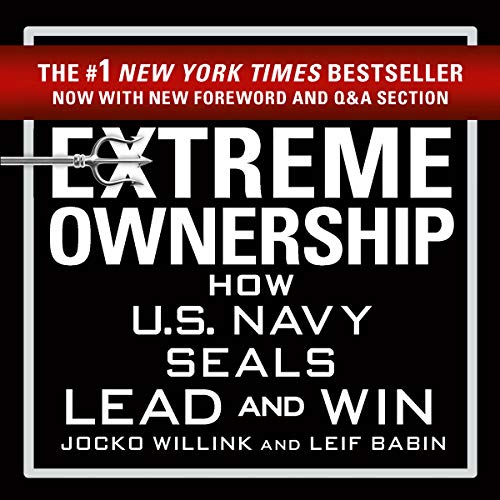It doesn’t matter if you don't plan on jumping out of an airplane and into battle, or bursting through the doors of an enemy compound anytime soon, or at any point in your life for that matter – there is a whole lot to be learned from Navy Seals, particularly with leadership.
For all the definitions, descriptions, and characterisations of leaders, there are only two that matter:
Put simply…
Effective leaders lead successful teams that accomplish their mission and win... Ineffective leaders do not.
The best leaders are not driven by ego or personal agendas, just simply focused on the mission and how best to accomplish it.
As a leader, you are truly and ultimately responsible for everything that happens! This is a concept called extreme ownership (coined by Jocko Willink) whereby all responsibility for success AND failure, rests with you.
You can’t blame your products or services, your suppliers, your budget, the economy and market, competitors or your team for your success or failure. You are accountable for your success in your job, your career and your life.
A true leader owns the outcome. When things go wrong, you have to take ownership. No excuses.
You must have the humility to own mistakes and admit failures, take ownership of them, and develop a plan to overcome them and win.
When your team aren’t doing what they should, don’t blame them. Instead, take a look in the mirror! You bear full responsibility for explaining the mission, developing the tactics, and securing the training and resources to enable the team to properly and successfully execute.
If a team member is not performing at the level required for the team to succeed, you must train and mentor that under performer. But if they continually fail to meet standards and expectations, then you must be loyal to the team and the mission above ANY individual…
And this can sometimes mean making the tough call to terminate them and hire others who CAN and WILL get the job done.
It’s all on you.
Total responsibility for failure is a difficult thing to accept, and taking ownership when things go wrong requires extraordinary humility and courage. But this is an absolute necessity to growing and further developing as a leader.
This will require you to set your ego aside, accept responsibility for failures, attack weaknesses, and consistently work to a build a better and more effective team.
A key note to mention here also, is to never take credit for your team’s successes, put that honour upon your subordinate leaders and team members… (remember, being a leader, much like being a parent, is one of the most under-appreciated jobs – so if you’re in it for praise and recognition, maybe leadership isn’t for you…).
When it comes to standards, as a leader, it’s not what you preach, it’s what you tolerate.
Once a culture of extreme ownership is built into your team at every level, the entire team performs well, and performance continues to improve, even when you’re not there.
Shoutout to Jocko Willink and Leif Babin for their incredible lessons and takes on leadership (as seen in their book, Extreme Ownership: How U.S. Navy SEALs Lead and Win).


